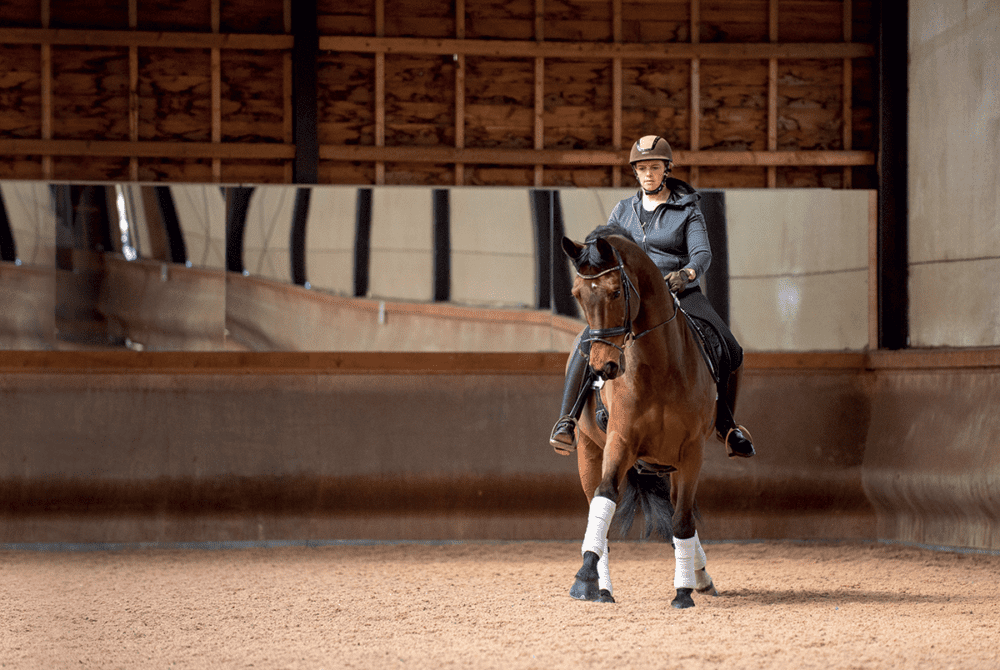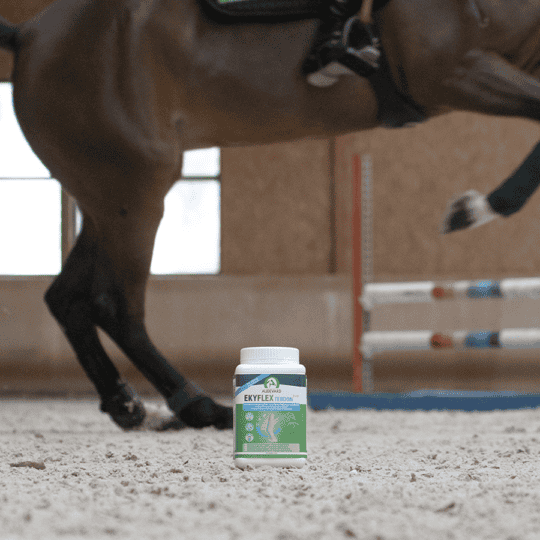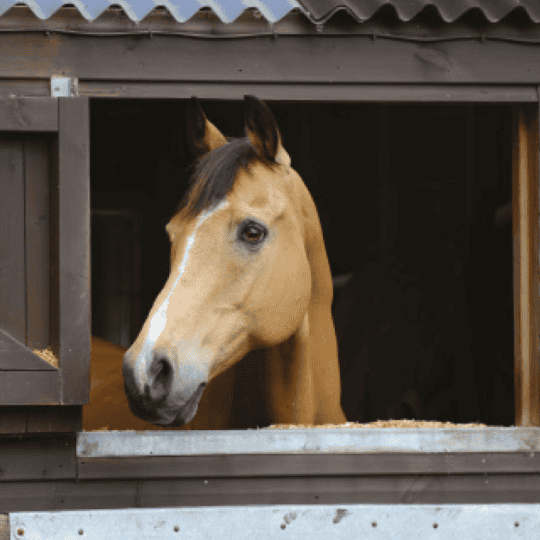Have a go at perfecting your half-pass with Sarah Higgins
Posted 3rd November 2021
Keen to dip your toe into the world of half-pass, but not sure where to start? While it’s easy to overcomplicate things, by keeping it simple you’ll make the movement far easier to crack

Learning new dressage skills is a challenge that should always be fun. But with half-pass, it’s easy to get bogged down with the details. The movement is a feature of Medium tests and above, so you might picture dramatic leg crossing that you see in a steep-angled Grand Prix half-pass and feel that you need to replicate it.
Aiming to rival the elites won’t set you up for success but, whether you aim to perform a half-pass in competition, you can still unlock the next-level suppleness that half-pass brings by introducing it at home. By stripping back your expectations of half-pass and working towards it in stages, you’ll be sideways stepping in no time – and here’s how.
What is half-pass?
Like leg-yield, half-pass is a sideways movement on a diagonal line that involves leg crossing. Unlike leg-yield, your horse’s body should be bent slightly around your inside leg with his neck flexed in the direction of movement, while his shoulders and quarters should look parallel. The degree of bend and exaggeration of leg crossing depends on the angle of the diagonal line – the steeper it is, the more pronounced the movement becomes.
While both involve going sideways, half-pass is more advanced than leg-yield because it requires a greater level of…
- suppleness Your horse needs to be relaxed and free enough in his body to bend in the direction of movement while bringing his outside hindleg underneath him
- engagement Speaking of the outside hindleg, it’ll be working overtime. To execute the half-pass, your horse needs to be able to push it across and under his body to power the movement, meaning he needs to be strong and established enough to take more weight into his hindquarters
- collection Half-pass necessitates a shorter frame and a higher step to achieve correct positioning – two key components of collection
If you’re not sure whether you and your horse are quite hitting these criteria, speak to your trainer. If they know half-pass is the goal, they can help you use lessons and schooling sessions to improve and develop your horse’s way of going.
DID YOU KNOW?
Half-pass is essentially travers, also known as quarters-in, on a diagonal line.
Half-pass troubleshooting
There’s a lot going on in half-pass, so don’t be discouraged if you run into any issues. There are faults commonly associated with the movement that everyone picks up from time to time – here’s how to iron them out…
- quarters leading Usually a result of a rider panicking about their placement as they turn their horse onto the long diagonal, quarters leading cuts the engine so much that it makes it impossible for your horse to maintain an active trot – if he can trot at all. Keep in mind that you need to have him moving forward along the diagonal, aiming for K and pushing him on between your hands
- losing forwardness If the quarters placement seems correct but your horse is still a little sluggish, it’s more than likely because he hasn’t yet developed the level of suppleness that’ll allow him to maintain an active pace while keeping his shoulders and quarters in line. On an inexperienced horse, I like to allow the shoulders to lead. It’s not a textbook
half-pass, but it’s a steppingstone in helping him build the suppleness he needs for a better quality movement while allowing him to remain in front of your leg more easily
- losing neck bend Horses who aren’t at peak suppleness or are new to putting their quarters on an inner track sometimes turn their head and neck to the outside, straightening their body out and resulting in a sort of leg-yield down the line you’re riding. Keeping control of where your horse’s shoulders are pointing is key to success and why it’s so important to have clear markers to aim for, like the MXK line
TOP TIP
Not sure if you’re getting the right angle during lateral work? If you’re lucky enough to have them, work towards your arena mirrors. Otherwise, you could ask a friend on the ground to video you from the front.
Pick up your copy of Winter Horse&Rider on sale 4 November 2021, and find out everything else you need to know for a half-pass










